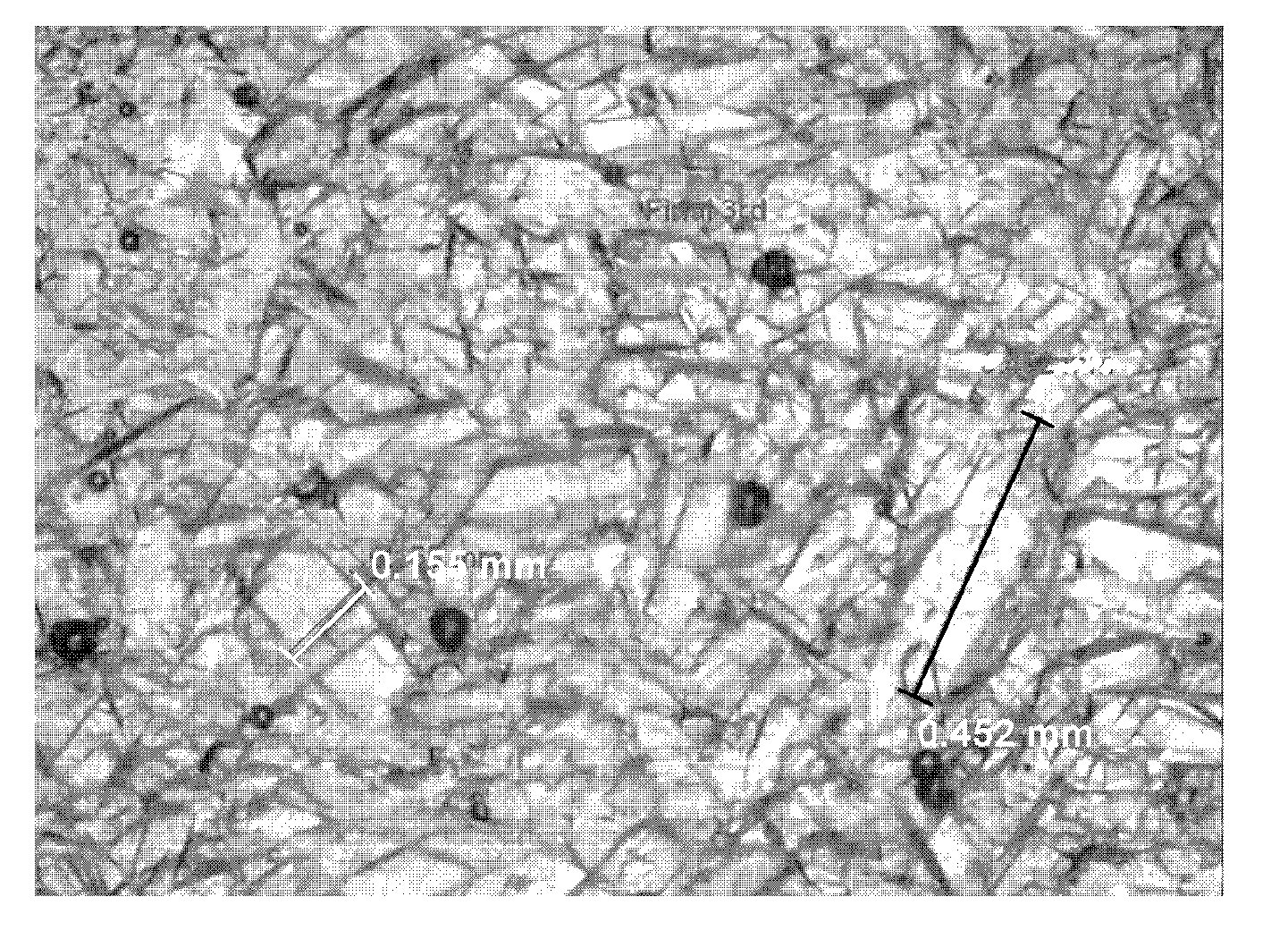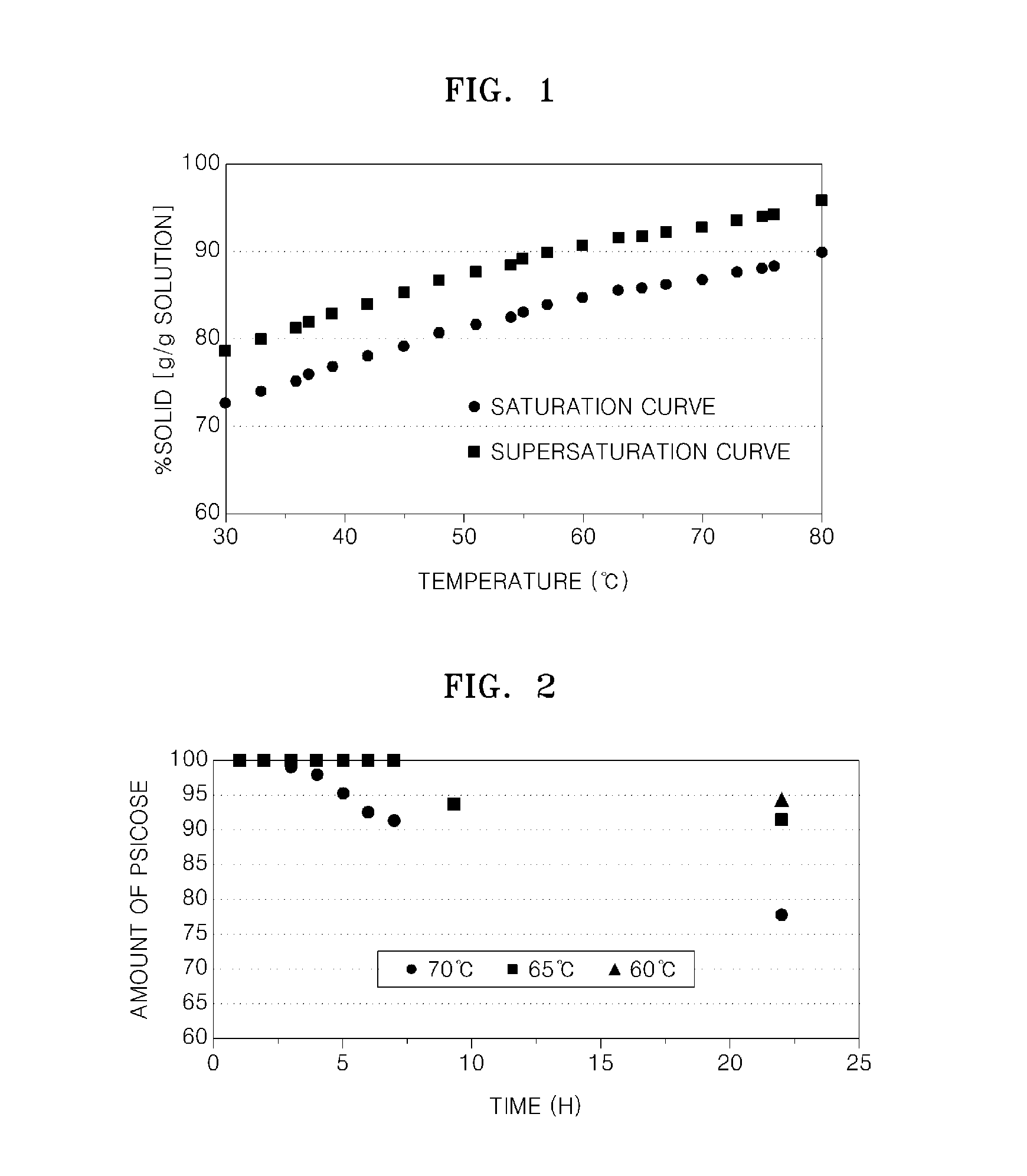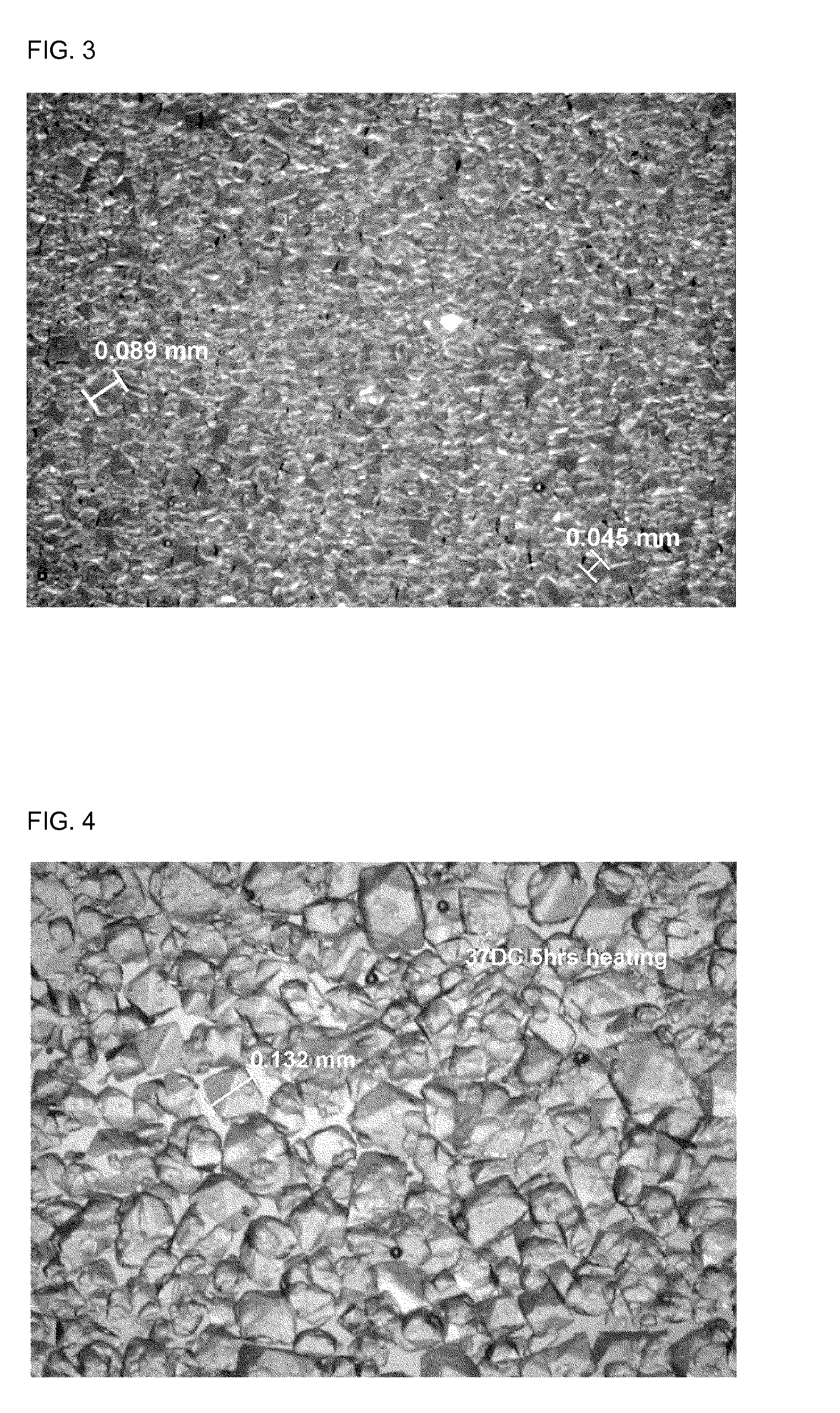Method of producing d-psicose crystals
a technology of d-psicose and crystals, which is applied in the field of producing d-psicose crystals, can solve the problems of high production cost of d-psicose, low yield of d-psicose, and difficulty in chemical synthesis to produce d-psicos
- Summary
- Abstract
- Description
- Claims
- Application Information
AI Technical Summary
Benefits of technology
Problems solved by technology
Method used
Image
Examples
example 1
Production of a Low-Purity D-Psicose Solution by Using a Microorganism of Corynebacterium Genus
[0063]As disclosed in Korea Patent Application No. 10-2009-0118465, D-psicose was prepared by employing a method of continuously producing D-psicose, including culturing Corynebacterium glutamicum KCTC 13032 and converting fructose into D-psicose by carriers on which the micro-organism or a D-psicose epimerase isolated therefrom were immobilized. The level of D-psicose in a D-psicose solution prepared by employing this method was about 22%, which was too low to conduct direct crystallization therefrom.
example 2
Purification of a Low-Purity D-Psicose Solution
[0064]The D-psicose solution produced in Example 1 was concentrated to about 40% (g / g solution), followed by passage through a decolorization column filled with granulated active carbon to remove colored materials in the concentrated solution.
[0065]The purity of D-psicose in the D-psicose solution produced in Example 1 was about 22% as the solid content, which was so low that it was not appropriate for crystallization. The purity of a material to be crystallized should be increased to about 70% to about 90% or more for crystallization. For efficient isolation of D-psicose by chromatography, ions should be removed from a D-psicose solution. When an ionic component is present in a solution to be separated, an active group in a separation resin is substituted by the ionic component, reducing the separation capability of the resin and thus it is impossible to use the separation resin repetitively. Accordingly, the decolored D-psicose soluti...
example 3
Preparation of a Highly Pure D-Psicose Solution by Chromatography
[0066]The low-purity D-psicose solution from which impurities such as colored materials and the ionic component had been removed by decoloration and desalting in Example 2 was concentrated up to about 60% (g / g solution), followed by passage through an ion exchange resin (Purolite PCR 642 K) substituted by a calcium group to obtain a purified D-psicose solution.
[0067]The volume of the ion exchange resins which filled the ion exchange resin column was about 200 l, the volume of a sample to be passed through the column, that is, a purified D-psicose solution prepared in Example 2, was about 20 l, and the operation temperature was about 60° C. The sample was injected and eluted with deionized water at about 260 l / hr, and then concentrations of fructose and D-psicose were respectively measured by using a HPLC system (HP, Agilent 1200 series) in each fraction collected. A pure D-psicose fraction was obtained and a fraction c...
PUM
| Property | Measurement | Unit |
|---|---|---|
| Temperature | aaaaa | aaaaa |
| Temperature | aaaaa | aaaaa |
| Fraction | aaaaa | aaaaa |
Abstract
Description
Claims
Application Information
 Login to View More
Login to View More - R&D
- Intellectual Property
- Life Sciences
- Materials
- Tech Scout
- Unparalleled Data Quality
- Higher Quality Content
- 60% Fewer Hallucinations
Browse by: Latest US Patents, China's latest patents, Technical Efficacy Thesaurus, Application Domain, Technology Topic, Popular Technical Reports.
© 2025 PatSnap. All rights reserved.Legal|Privacy policy|Modern Slavery Act Transparency Statement|Sitemap|About US| Contact US: help@patsnap.com



